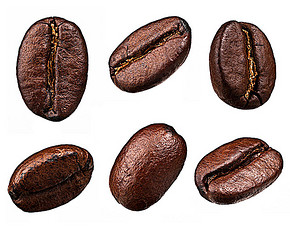What are the varieties of coffee in Tanzania? what are the characteristics of taste and flavor?
Follow the caf é (Wechat official account vdailycom) and found that Beautiful Cafe opened a small shop of its own.
Well-known representative coffee: Kilimanjaro
Tanzania is located in eastern Africa, to the south of Kenya and to the east of the Indian Ocean, with a coastline of 1500 kilometers.
Coffee is not the main agriculture in Tanzania and is mostly operated on a small scale.
Most of the coffee is grown on the hillside of Mount Kilimanjaro in northern Tanzania near Kenya. About 70% of the coffee is Arabica, which is treated by washing, while the remaining 30% of Robasta is treated by the sun.
The Krimanjaro coffee produced here is generally acidic, but slightly weaker than that of Kenyan AA, and its taste is similar to Kenyan AA, with a rich texture and strong sweet aroma.

Market for coffee in Tanzania:
Coffee exports from Tanzania (Tanzania) play an important role in the whole national economy.
In the past, the coffee industry in Tanzania has been dominated by manor cultivation, but now more than 85% are grown by small farmers. Many small farmers form cooperative organizations, the most important of which is the Kilimanjaro Cooperative Alliance (KilimanjaroCooperativeUnion, referred to as KNCU). Tanzanian coffee is sold by the Tanzanian Coffee Management Council (TanzanianCoffeeMarketingBoard, TCMB) to private exporters by auction. In the 1980s, most coffee sales in Tanzania shifted from auctions to being sold directly to the Tanzania Coffee Management Committee.
The coffee cups made in Songea are well-behaved, reflecting the common characteristics of "northern" coffee. However, the coffee produced by Kibo has lost this characteristic because of the loss of flavor during transportation. Songea tastes clear and unrestrained, although it is still slightly more relaxed and mild than Kenyan coffee. This season, Nkoanekoli and Ngorongoro have also joined the ranks of coffee cultivation, which represents the development of coffee cultivation in other regions. However, there is a place where the coffee is stale and tasteless, with no performance in the cup. We have tested some garden beans, and they all have obvious "transportation problems", that is, the flavor of coffee beans has been lost in the course of transportation. But the problem is that although Tanzania is aware of the problem and has paid extra for it, the quality of coffee beans has not improved. So what can we do to encourage people to make mistakes and try their best to prevent the quality defects of coffee beans caused by transportation, so that their flavor can be better reflected?
Important Notice :
前街咖啡 FrontStreet Coffee has moved to new addredd:
FrontStreet Coffee Address: 315,Donghua East Road,GuangZhou
Tel:020 38364473
- Prev

Classification of Blue Mountain Coffee to distinguish between true and false Blue Mountain
Following Caf é comment (Wechat official account vdailycom) found out the secret why Blue Mountain Coffee tastes pure when it opens a small shop in Beautiful Caf é. True Blue Mountain Coffee is one of the most advantageous growing conditions in the world and Jamaica's weather, geological structure and topography together provide an ideal place to grow. Designated Jamaican Blue Mountain Coffee can only be grown in the Blue Mountain area.
- Next

Tanzanian coffee bean varieties, taste of Tanzanian coffee
Pay attention to coffee comment (Weixin Official Accounts vdailycom ) and find a beautiful cafe to open its own shop Tanzanian beans Source: In 1898, bourbon coffee was introduced to Kilimanjaro region of Tanzania by Catholic priests. The Kent species was introduced in 1920. So far, coffee in Tanzania has been dominated by bourbon and Kent. Coffee
Related
- Detailed explanation of Jadeite planting Land in Panamanian Jadeite Manor introduction to the grading system of Jadeite competitive bidding, Red bid, Green bid and Rose Summer
- Story of Coffee planting in Brenka region of Costa Rica Stonehenge Manor anaerobic heavy honey treatment of flavor mouth
- What's on the barrel of Blue Mountain Coffee beans?
- Can American coffee also pull flowers? How to use hot American style to pull out a good-looking pattern?
- Can you make a cold extract with coffee beans? What is the right proportion for cold-extracted coffee formula?
- Indonesian PWN Gold Mandrine Coffee Origin Features Flavor How to Chong? Mandolin coffee is American.
- A brief introduction to the flavor characteristics of Brazilian yellow bourbon coffee beans
- What is the effect of different water quality on the flavor of cold-extracted coffee? What kind of water is best for brewing coffee?
- Why do you think of Rose Summer whenever you mention Panamanian coffee?
- Introduction to the characteristics of authentic blue mountain coffee bean producing areas? What is the CIB Coffee Authority in Jamaica?

